I think you'd be better off using a wall-mount power supply. They're widely available (my local grocery store carries them) and inexpensive (< $10 US).
If "small" is important to you, you might be surprised at how big an across-the-line rated capacitor is. You've probably seen them in home appliances without noticing their values. They're about the same size as the smallest power transformers.
Adding a few thoughts:
All the current estimates - in the question and in the answers - are too
high. It's easy to calculate the maximum current that would be drawn by
a worst-case load (a short-circuit). In each half cycle the voltage
across C1 changes by 325 volts (230 Vrms is 325 Vp), which pushes 975
microcoulombs through the capacitor. This happens every 10 msec., so the
average DC current is 97.5 ma. The actual current will be less, but not
a lot less, since the peak voltage seen by C1 is reduced by two diode
drops and 5.5 volts.
Troubleshooting the circuit could be exciting. For example, if you probe
either side of Dz (or its parallel cohorts) with a scope, you'll see a
(more or less) square wave, with an average value depending on which
side of Dz you chose. Don't even think of grounding the probe.
There's a similar circuit that uses fewer components: connect the load
side of C1 to the cathode of a zener whose anode is grounded (actually
neutraled - neutered?). Then, getting back to the zener's cathode,
connect it to the anode of a rectifier whose cathode supplies the load.
The load return would be neutral. The ripple would be higher, for a
given C2, but it saves three rectifiers. Not a big parts cost savings,
but it uses less room on the schematic, which could lead to using less
paper. Spotted owls will thank you.
Electric shock is not a big consideration. All modern power tools, for
example, have plastic cases, and don't use the ground connections
provided by electrical outlets.
Damage from power line transients is, really, a significant
consideration. Neil_UK mentioned 1500 volts. I read 6000 volts
somewhere.
The biggest worry is some component failing and starting a fire. That
hazard, and the other two just mentioned, are best dealt with by making
them someone else's problem. That was the reason for my first round
answer: wall-mount PS.
Your concerns with size and cost suggest you're considering producing
more than a handful. You should start your design by reviewing
requirements for certification by agencies like UL. It used to be said,
in antiquity (1970s) that the only requirement for starting a power
supply business was having a two car garage and only one car. That didn't
mean that there were a lot of PS makers, but that the scope of the
effort was usually underestimated.
